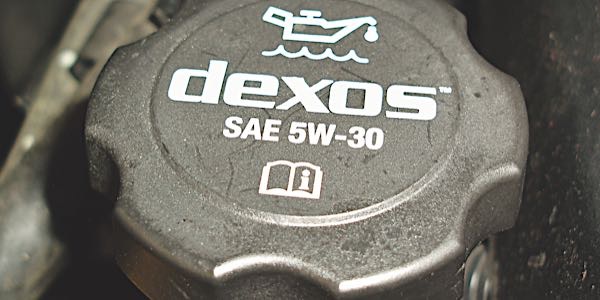The only constant in the oil change business is change itself, especially if you’re trying to maintain an inventory of engine oil for all makes and models of vehicles. Since Volkswagen began requiring application-specific engine oil in the mid-1990s, the oil change business has (pardon the pun) “changed.” While many Asian vehicles currently require only a universal 5W-30 motor oil, European manufacturers have leaned toward requiring more application-specific engine oils.
The trend has spread to the domestic manufacturers as well, with Ford Motor Company requiring specific engine oils for a number of its engines and General Motors requiring its Dexos or its licensed equivalents for use in its current generation of vehicles. Many high-end and high-performance nameplates from any auto manufacturer often require synthetic or application-specific synthetic oils as well. See Photo 1.
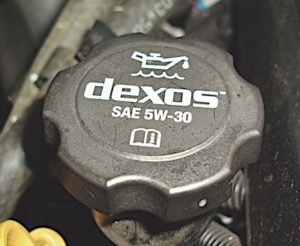
application-specific engine oil.
The Driving Force
Synthetic and lower-viscosity engine oils have been used since the 1980s to increase fuel economy. During the late 1990s, Ford Motor Co. and Honda Motor Co. began requiring 5W-20 for many of their new engines to increase fuel economy and to deal with several different piston ring issues. General Motors, which also manufactures on a global basis, began requiring its Dexos brand to meet extended oil change interval requirements for its latest generation of engines.
As you might suspect, improved engine designs are the driving force behind increasingly stringent engine oil requirements. Turbocharged diesel engines have their specific lubrication requirements, as do engines equipped with variable valve timing (VVT) and gasoline direct injection (GDI). For example, the extreme thermal and mechanical stresses in a compression-ignition diesel engine increase the demands on engine oil. Diesel engine oils must withstand extremely high thermal stresses as well as very high concentrations of soot produced by combustion.
VVT engines similarly not only require a specific oil viscosity, but also require an oil that keeps the pulse-modulated variable valve timing solenoids clean, well-lubricated and free of small air bubbles caused by oil foaming. See Photo 2.
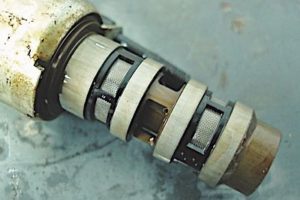
oil screens on this variable valve timing (VVT) solenoid appear clean, they’re actually clogged with varnish from oxidized engine oil.
GDI engines also have some unique engine oil requirements, the most notable of which are the anti-scuffing properties that are needed to prevent damage to the camshaft fuel pump eccentric and cam follower on the high-pressure mechanical fuel pump. When generic engine oils are used, the camshaft eccentric eventually begins galling, as illustrated in Photo 3.
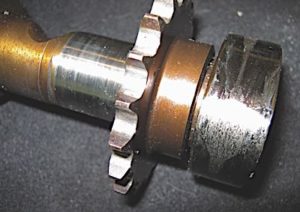
In addition, GDI engines also tend to contaminate the engine oil with excessive amounts of carbon that, according to some studies, tends to increase timing chain wear.
Lastly, some GDI engines are designed with up to 14:1 compression ratios. In most GDI designs, detonation is controlled by variable valve timing and by modifying the direct fuel injection timing mode. But researchers have found that, on some engines, very small droplets of engine oil creep past the piston rings and cause detonation, which mechanically damages the piston rings and lands.
In some instances, engineers have changed the PCM’s operating strategies to decrease detonation tendencies and, in other instances, lubrication engineers are working to solve detonation problems by changing the oil formulation.
Oil Formulations
How do lubrication engineers change the properties of engine oil? According to one leading lubrication journal, there are four major additive manufacturers and up to 20 paraffinic base oil stock suppliers in North America. In the U.S. and Canada, we also have about 227 companies licensed to sell API SN engine oils.
The complexity of today’s engine oil market is perhaps best illustrated by General Motors’ Dexos 1 website www.centerforqa.com/gm/dexos1-brands. Although considered a “domestic” auto manufacturer, General Motors actually manufactures vehicles in 34 countries and markets vehicles in 140 countries. According to the website, many different brands of oils are now licensed to display the Dexos logo on their containers.
Notice that 5W-20 and 5W-30 are the only viscosities supplied, with Dexos 1 being used in gasoline engines and Dexos 2 in diesel applications.
Under “About Dexos,” the website explains why the Dexos specifications exceed those of the various oil rating organizations. Further note that many licensed brands are approved for use only in specific geographic locations, such as “Global,” “North America,” and “North America and Europe.”
Labeling is, of course, another caveat in choosing the correct engine oil for a specific application. A phrase such as, “meets OE specifications” is not equivalent to “OE-approved” or “OE-licensed.” An engine oil might also include in its labeling a phrase indicating that it meets an OE alpha-numeric specification number. In any case, choosing the correct engine oil for a specific application can be tricky so, when in doubt about an aftermarket oil, it’s best to choose the OE-branded oil.
Oil Filtration
Choosing an oil filter that will meet OE requirements for extended oil changes is as important as choosing the correct engine oil. The basic parameters are valving, capacity, micron rating and efficiency. Any OE-equivalent oil filter should, for example, contain an anti-drain back valve and an oil filter bypass valve. The anti-drain valve simply prevents the oil from draining out of the engine’s oil galleries, through the oil filter and back to the oil pan when the engine is shut off.
While it’s been many years since I’ve encountered oil filters lacking an anti-drain valve, filters lacking anti-drain protection usually cause excessive engine noise during startup due to a slow build up of oil pressure. The oil filter bypass valve is critical because, in the event that the oil filter media clogs, the bypass valve allows engine oil to flow directly from the oil pump to the engine oil galleries.
The oil filter media itself must have enough filtering capacity to continue trapping dirt and debris throughout the extended oil change interval. Filters lacking filtering capacity will prematurely clog during the extended oil change interval, causing the bypass valve to open, which allows dirt and debris to contact engine crankshaft bearings and other wearing surfaces. The bypass mode most often occurs during startup when the engine oil is cold. See Photo 4.
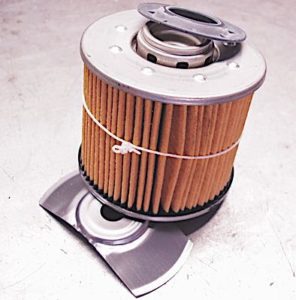
Lastly, it’s important to differentiate between the micron rating of an oil filter and its efficiency rating when filtering oil. While the micron rating indicates to a millionth of an inch the size of particle that can be trapped by the oil filter, the actual efficiency rating indicates how well the filter cleans the engine oil as it passes through the oil filter media.
So, while two filters can have the same micron rating, the actual efficiency rating might vary widely between the two filters. In any case, oil filters must be able to endure modern extended oil change intervals. Using a substandard or non-OE equivalent filter simply defeats the purpose of using an OE-licensed engine oil.

